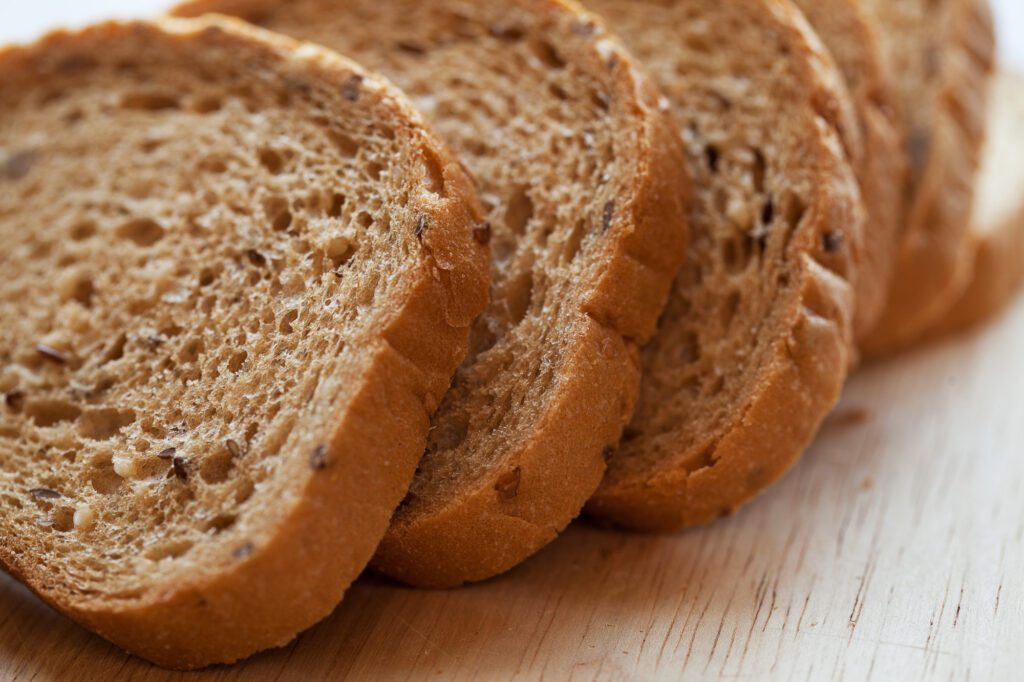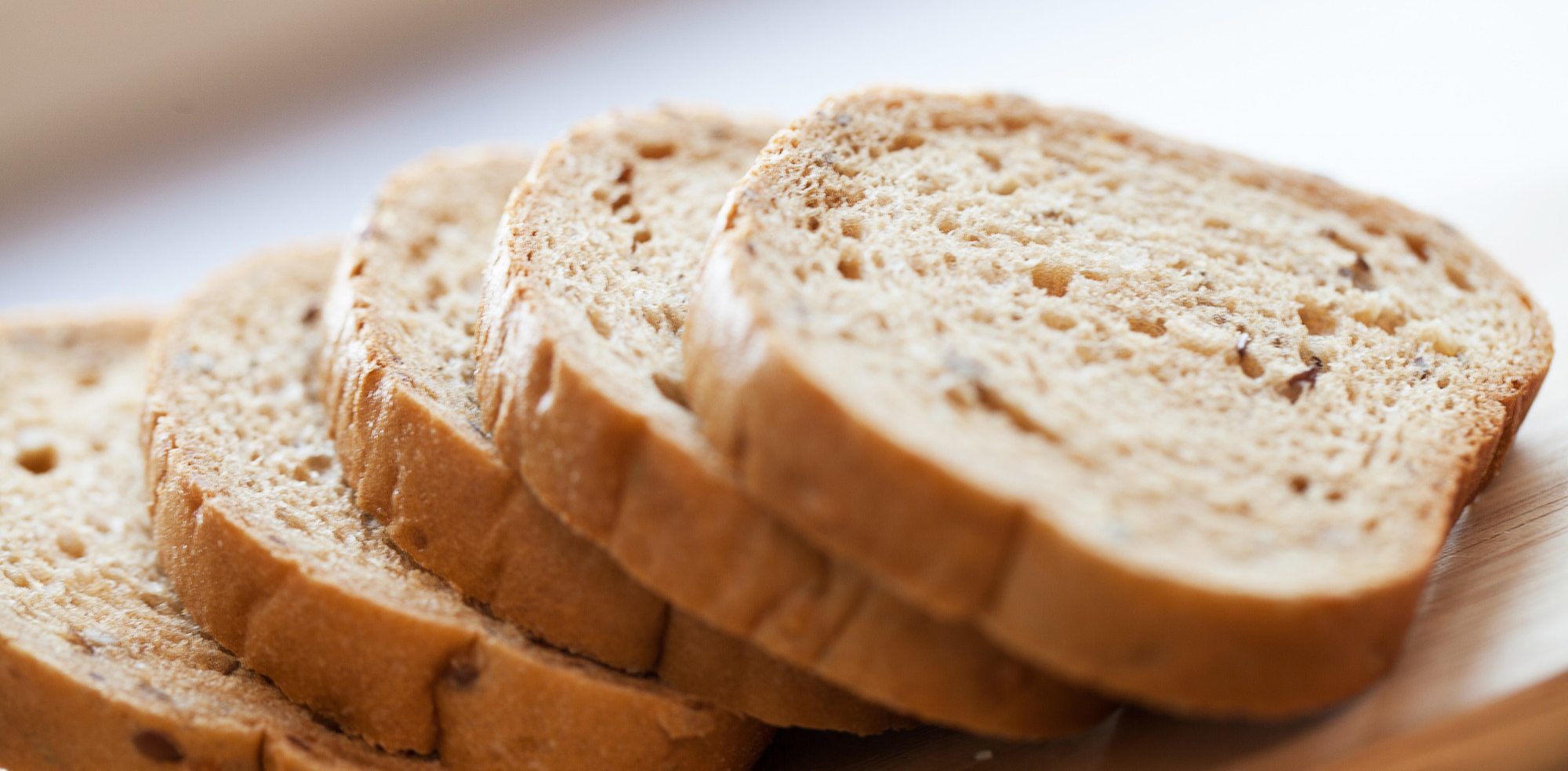Here, we are sharing information on the topic “bread health issue.” For thousands of years, bread has been a staple diet in every part of the world. The reasons why people still eat it include its taste, nutrition, portability, and ease of use. There are numerous varieties of bread, each made by a particular method with a range of components. Breads that are sweetened, whole-grain, cornmeal, leavened or unleavened, flatbread, sourdough, sprouted-grain bread, soda bread, and many more are examples.

bread health issue
- In bread, carbohydrates are the main nutritional component. The body uses carbohydrates as fuel. Carbohydrates from fruits, vegetables, legumes, and minimally processed grains are the healthiest food sources. These foods also contain antioxidants, fiber, vitamins, and minerals.
- White bread is manufactured from a highly processed, simple carbohydrate and is packed and packaged. Although it digests quickly and easily, it is not very nutritious.
- Blood sugar spikes shortly after eating foods produced with highly processed carbohydrates. Type 2 diabetes may eventually develop as a result of recurrent blood sugar rises.
- Additionally, processed carbohydrates are low in fiber. Consequently, after consuming them, one will not feel satisfied. Soon after, especially as the blood sugar falls, they will have cravings for more food once more.
- Food producers frequently lose nutrients throughout the processing process. To make up for these components that are missing from white bread, makers frequently add vitamins and minerals. They cannot, however, take the place of fiber, which is necessary for heart and intestinal health.
- Consuming large amounts of simple carbs, such as white bread that has already been prepared, might increase the risk of developing diabetes, heart disease, and other chronic illnesses linked to a lifestyle that involves eating out.
Whole grains: what are they?
Whole-meal bread’s whole grains offer several advantages. They can improve general health and lower the risk of obesity, as well as address a number of other issues and illnesses.
Whole foods are defined as follows by the Whole Grains Council:
All the necessary components and naturally existing nutrients of the whole grain seed in their native quantities are present in whole grains and foods derived from them. The food product derived from processed grain (such as cracked, crushed, rolled, extruded, or cooked) ought to have the same rich nutritional balance as the original grain seed. According to this definition, a grain can only be considered entire if it has all of the original kernel, including the bran, germ, and endosperm.
According to the American Heart Association (AHA), whole grains are an excellent source of:
B vitamins, such as iron, magnesium, selenium, folic acid, and dietary fiber. A person on a diet of 2,000 calories per day should consume at least 25 grammes (g) of fiber each day, according to the American Heart Association. A person should eat whole grains for at least half of their diet.
Fiber can lower the chance of
- obesity
- colon cancer
- hypertension
- elevated blood pressure
- and cardiovascular disease
Additionally, whole grains provide protein. How to determine whether grains are entire. The word “whole” ought to be at the top of the ingredient list when selecting store-bought bread. The term “whole” guarantees the inclusion of the
- bran
- germ
- endosperm, the three components of the grain, in the final product.
A whole-grain product is not always indicated by the following labels:
- Wheat bread with many grains, organic flour, wheat germ, unbleached wheat flour, and 100% wheat.
- You can get a better picture of what’s in the product by looking at the ingredient list.
- You may buy whole-grain bread online and at grocery stores.
Refined flour: what is it?
- Manufacturers treat the grain to remove the bran and germ, leaving only the endosperm, in order to make white bread or white flour. Refined flour products often have a longer shelf life and a finer, lighter texture.
- But the fiber, vitamins, and minerals are mostly or completely eliminated during processing. Little else is present in the residual endosperm, but it does supply quick-digesting carbohydrates.
- Because of the potential for nutritional inadequacies, producers are increasingly creating “enhanced” flours.
- By adding supplements like folic acid and other B vitamins, they replenish some of the nutrients that were lost during processing and add them back to the processed white flour. Supplemental vitamins, however, are inferior to those that are naturally found in the diet.
When does bread become unhealthy?
- White-packaged bread may not be the healthiest due to its highly processed flour and added ingredients. Overindulgence in white bread can aggravate diabetes, heart disease, and obesity.
- Purchasing bread with the term “whole” listed as the first ingredient does not, however, ensure that the item is healthy. This is just the beginning. Twenty ingredients or more, including preservatives and added sugars and salts, can be found in even whole-grain bread. Not every one of them promotes health.
- Although preservatives can extend the shelf life of bread, fresh bread with fewer preservatives can still be kept fresh by storing it in the freezer or refrigerator. Sugar substitutes, or added sugars, are found in many types of bread.
wholesome bread selections
- A nice alternative is bread made with sprouted grains. A grain’s nutrients become more readily absorbed by the body and easier to digest after sprouting.
- It might be a more beneficial source of fiber, folate, vitamin C, protein, and other nutrients.
- A high-fiber bread made entirely of sprouted grains—no flour—is known as Ezekiel bread. Grain bread that has sprouted should be stored in the freezer or refrigerator.
- You can buy Ezekiel bread on the internet.
- Find out more about foods that can benefit diabetics, including Ezekiel bread, here.
Should one stay away from gluten?
- Some people have intolerances or allergies that require them to avoid bread.
- The gluten-free diet has gained popularity in recent years.
- Eating gluten can be extremely risky for someone who has celiac disease, as the gluten triggers a strong autoimmune reaction that damages the intestinal lining.
- Nonetheless, a lot of people do not need to avoid gluten because they can tolerate it.
- Researchers have found that avoiding gluten can make people give up on things like whole grains that might be good for them.

Frequently asked questions
(bread health issue)
Is it healthy to avoid bread?
Answer: One way to lower your risk of type 2 diabetes is to consume less starchy foods like bread, as well as less red meat, processed foods, and sugar-sweetened beverages. You should also increase your diet of fruits, vegetables, whole grains, fish, and chicken.
Is it safe to eat bread every day?
Answer: You don’t need to avoid bread unless you have a medical condition like a wheat allergy, non-celiac gluten sensitivity, or celiac disease! Yes, you read that right—bread may be a component of a healthy, balanced diet every single day!
Is bread good for human health?
Answer: Bread—especially whole-meal bread—is a great source of dietary fiber, which maintains the health of our digestive systems, lowers blood sugar and cholesterol, and prolongs feelings of fullness.
Conclusion
(bread health issue)
- In summary, bread has long been a staple diet in many civilizations, yet there has been discussion over its potential health risks. It is clear that not all bread is made equal. Whole grain bread, for example, provides fiber, vitamins, and minerals, while processed white bread, in particular, can lead to health issues like blood sugar rises and weight gain if taken in excess.
- Choosing the right bread kind and consuming it in moderation are essential to maintaining a balanced diet. Furthermore, people with particular medical concerns, such as diabetes or gluten sensitivity, should speak with medical professionals to find the best bread options for their dietary requirements. Overall, when chosen carefully and eaten in moderation, bread can be a part of a balanced diet, but it’s vital to be aware of any potential health risks.
So, this is how the topic “bread health issue” has been addressed.
- For more information related to these topics, click here.
- You may also visit our Instagram page by clicking here.
- You may also visit our YouTube channel by clicking here







 Levera 500
Levera 500